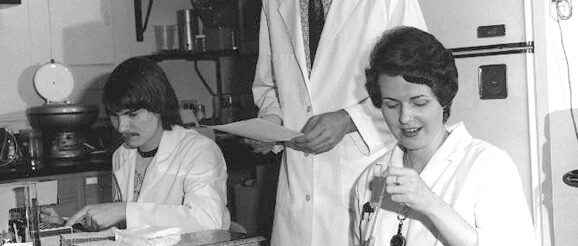73: Organizing Innovation — Michael Tushman

With special guest Hila Lifshitz-Assaf from New York University

Michael Tushman
Innovation is a popular topic and has been the subject of considerable theoretical development and practical literature for a long time. But innovating is a difficult process — what does it take to achieve it? How can an organization innovate more effectively and efficiently?
This month’s episode addresses of the fundamental classics of theory and research around innovation — Michael L. Tushman’s 1977 article, “Special boundary roles in the innovation process,” published in Administrative Science Quarterly. This article focuses on extensive research that Tushman conducted in research and development laboratories — 345 subjects aligned with 58 projects in all. The result of the research furthered understanding of the important of boundary spanning and the particular roles of those individuals who served as “gatekeepers,” “organizational liaisons” and “laboratory liaisons” who fostered internal communication — both in quality and quantity.
Michael Tushman’s work has been cited extensively and is often referred to as the originating work in the area of boundary spanning, even though this article cited earlier works on the topic. One scholar who has further Tushman’s work extensively is our special guest for this episode, Hila Lifshitz-Assaf, whose dissertation committee chair was none other than Tushman himself! With our own Pedro and Gretta, Hila talks about her own research project studying innovation and boundary spanning at NASA.
Part 1. Tushman’s study of how innovating systems must span boundaries (released 16 February 2021)
Part 2. A world of boundary spanning — does it help us become more innovative? (forthcoming 23 February 2021)
Read with us:
Tushman, M. L. (1977). Special boundary roles in the innovation process. Administrative Science Quarterly, 22(4), 587-605.
To know more:
Allen, T. J. (1984). Managing the flow of technology: Technology transfer and the dissemination of technological information within the R&D organization. MIT Press Books.
Bechky, B. A. (2003). Sharing meaning across occupational communities: The transformation of understanding on a production floor. Organization Science, 14(3), 312-330.
Carlile, P. R. (2004). Transferring, translating, and transforming: An integrative framework for managing knowledge across boundaries. Organization Science, 15(5), 555-568.
Corporaal, G. 2018. Boundary Work: Addressing the challenges of cross-boundary collaboration at Mirai Corporation
Fleming, L., Mingo, S., & Chen, D. (2007). Collaborative brokerage, generative creativity, and creative success. Administrative Science Quarterly, (3), 443-475.
Langley, A., Lindberg, K., Mørk, B. E., Nicolini, D., Raviola, E., & Walter, L. (2019). Boundary work among groups, occupations, and organizations: From cartography to process. Academy of Management Annals, (2), 704-736.
Lawrence, P. R., & Lorsch, J. W. (1967). Differentiation and integration in complex organizations. Administrative Science Quarterly
Levina, N., & Vaast, E. (2005). The emergence of boundary spanning competence in practice: Implications for implementation and use of information systems. MIS Quarterly, 29(2), 335-363.
Lifshitz-Assaf, H. (2018). Dismantling knowledge boundaries at NASA: The critical role of professional identity in open innovation. Administrative Science Quarterly, 63(4), 746-782.
The post 73: Organizing Innovation — Michael Tushman appeared first on Talking About Organizations Podcast.
